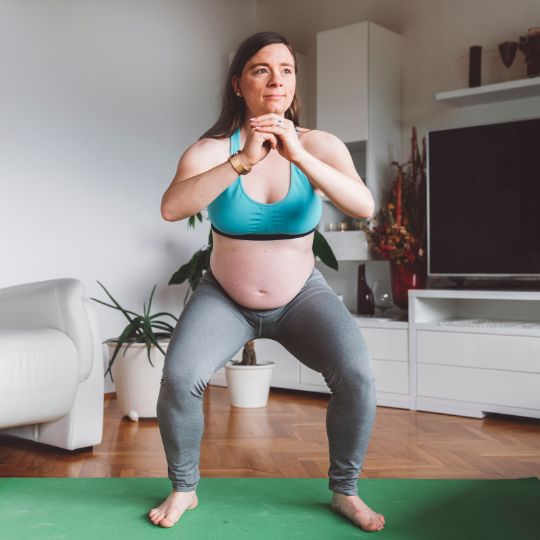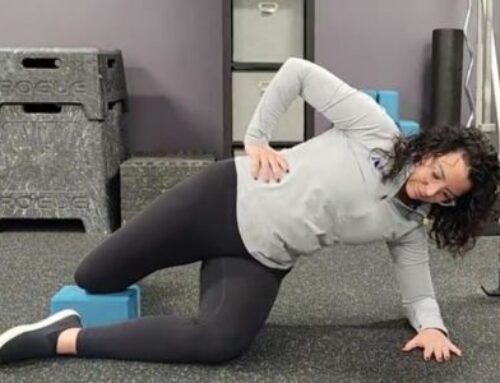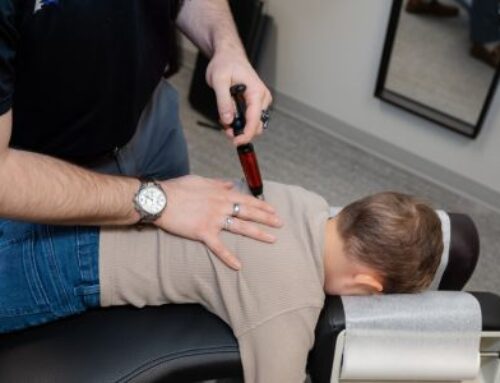There a two main areas where you might experience hip pain during pregnancy:
Side of the Hips:
Midwives, OBs and other healthcare providers recommend you cease sleeping on your back once you’ve entered your second trimester. Around that time your bump is growing to the point where you won’t be able to sleep on your stomach anymore either. That leaves you with side sleeping. You may experience pain related to the changing biomechanics in your pelvis as well as discomfort due to the pressure on your lateral hip. If the muscles in the lateral hip are already irritated, side sleeping will only make the pain and discomfort worse.
You may notice discomfort after side sleeping causing you to flip back and forth from side to side throughout the night. You can use a variety of pillows and configurations to get more comfortable. Try side sleeping with a few pillows to support your bump, the top of your leg, or lying on your back with pillows under one hip and shoulder.
Front of the Hip:
Although less frequent than other pregnancy complaints, anterior hip pain may present itself during your pregnancy. As your bump continues to grow, your center of gravity will pull forward. This tends to accentuate the lumbar lordosis and increase anterior pelvic tilt. This puts stress on the hip flexors stretching across the front of the hip. muscles crossing the front of the hip – psoas, illiacus, rectus femoris. This stress and stretch can manifest as muscular tightness and achy pain in the hip, groin or leg.
Foam rolling your quads may reduce discomfort.
Hip Pain Relief:
Although stretching seems like the best way to alleviate hip pain, the results are temporary. It will be more beneficial to incorporate exercise to strengthen the area, especially if you’re active. Start with these:
Incorporate them into your daily routine to stabilize the pelvis and hips. This, combined with a treatment care plan from one of our Webster Technique certified prenatal chiropractors, should help reduce pain and discomfort. You can book your next appointment HERE.





